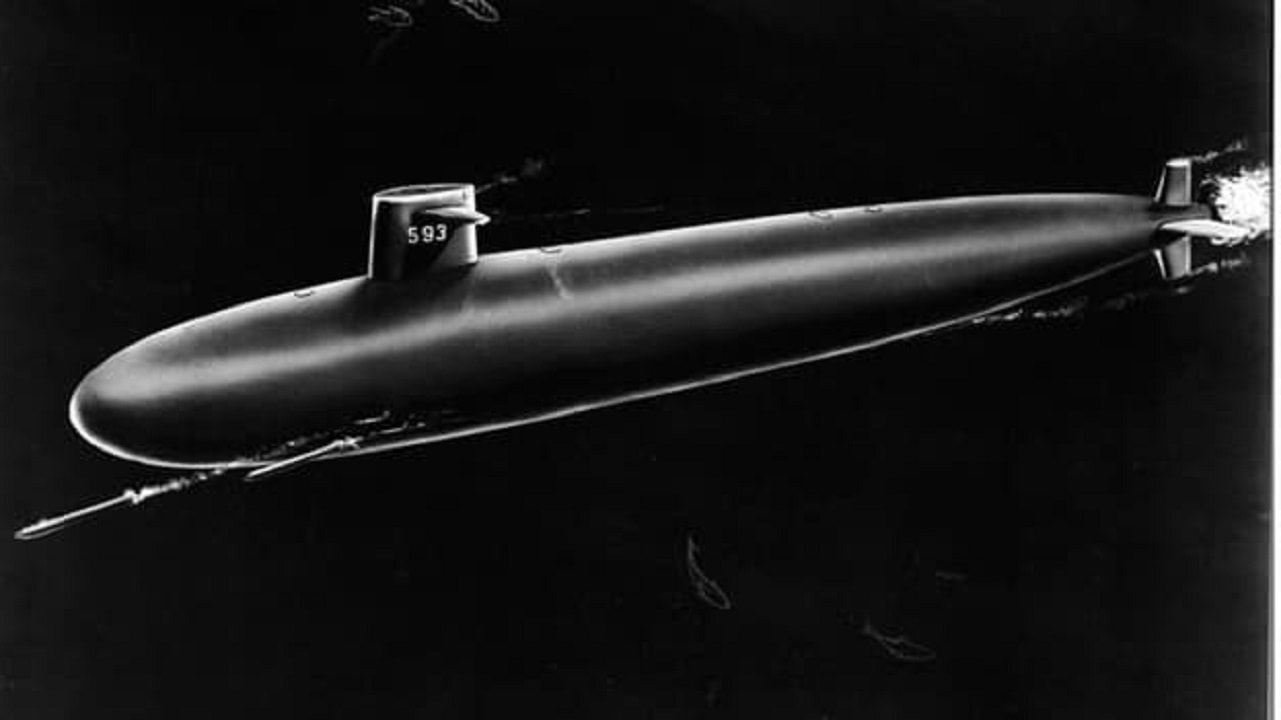Six decades ago, the world’s first ever nuclear-powered submarine sank to the bottom of the ocean. When the USS Thresher (SSN-593) sank while undergoing initial sea trials off the coast of Cape Cod, the lives of 129 officers, crewmen, and civilian technicians were tragically taken.
Ultimately, the submarine’s remains were located roughly 8,400 feet below the surface of the sea floor. In 2021, declassified reports from one of the ships responsible for locating the USS Thresher’s remains suggest that some of the submarine’s crew were still alive around 24 hours after the vessel imploded.
Introducing the USS Thresher
The loss of the Thresher became a watershed moment for the U.S. Navy, which soon implemented a series of submarine safety guidelines. More advanced than her predecessors, the Thresher, the lead boat in its class, featured a sophisticated weapons system and was more silent and speedier than any other submarine in the waters.
In addition to carrying launchers for the service’s newest anti-submarine missile, SUBROC, the Thresher sported passive and active sonar that could locate enemy ships at long ranges.
Combining the capabilities of attack and hunter-killer submarines, the Thresher was expected to be a powerhouse. The submarine had a cigar-shaped hull that was implemented for efficiency. The hefty BQQ-2 was considered to be the most cutting-edge sonar ever fitted to a submarine.
As detailed by the U.S. Naval Institute, the Thresher’s four torpedo tubes could fire the latest anti-ship and anti-submarine torpedoes and would later be able to fire the antisubmarine rocket (ASROC) from those tubes. Per USNI:
“The ASROC was a combination rocket and torpedo: Launched like a conventional torpedo, it would streak to the surface, leave the water on a ballistic trajectory, and plunge back into the water several miles from the Thresher, where the SUBROC’s nuclear warhead would detonate. (The SUBROC’s W55 nuclear warhead had a variable yield of one to five kilotons. The weapon was in the U.S. arsenal from 1965 to 1988.)”
What happened onboard the Thresher on April 10, 1963?
The USS Thresher had been conducting deep-diving tests when it disappeared on the morning of April 10, 1963. According to unclassified reports and statements surrounding the incident, the submarine rescue ship USS Skylark detected an implosion after 9:00 a.m. that day.
Specifically, the Skylark detected a low-frequency, high-energy noise.
The next day, the Seawolf and the Balao-class submarine USS Sea Owl (SS-405) arrived at the scene to help search for the missing submarine.
A few hours after the rescue began, the Seawolf heard a signal from a distress beacon, which needed to be manually activated in order to broadcast.
According to The Drive, the Seawolf then noted that the Thresher’s beacons were being switched on and off upon request, another significant indicator that there were survivors.
Throughout the day, more evidence that survivors were on board suggested that the submarine’s hull had not fully collapsed and might have even had enough power reserves to transmit sonar.
However, the Seawolf had to surface a few times, breaking contact with the sunken submarine.
Maya Carlin, a Senior Editor for 19FortyFive, is an analyst with the Center for Security Policy and a former Anna Sobol Levy Fellow at IDC Herzliya in Israel. She has by-lines in many publications, including The National Interest, Jerusalem Post, and Times of Israel. You can follow her on Twitter: @MayaCarlin.
From the Vault
‘You Really Oughta Go Home’: F-22 Raptor Stealth Fighter Flew Under F-4 From Iran

